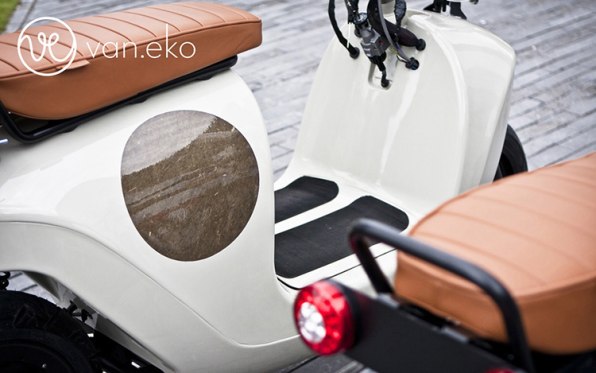How To Get A Hemp Growing License In Mississippi
You saw the headline, so let's just get this out of the way. The new Be.e scooter, is actually made from a hemp-based plastic and thus is not a pure form of the cannabis variant. (Meaning desperate or bored potheads can't smoke it.) Also, while hemp is indeed smokeable, it doesn't lead to any kind of high. (So really, don't try.)
There's a bigger buzz around this scooter anyway. The real story is that the bio-based, fully electric vehicle is no less durable or chic than any non-hemp motor scooter. Van.eko, the Dutch startup behind the Be.e design, boasts that the shell is so resilient it will simply scratch or scuff–not fall apart–if it ends up in any minor collision. The scooter's plant-based pedigree doesn't detract from its overall performance either, with speeds up to 30 mph and a 50-mile range.

As forward-thinking and experimental as the Be.e is, the designers found the technology was immediately applicable. "[T]here were no real hurdles for manufacturing," Van.eko founder Vaniek Colenbrander tells Co.Design. Natural fibers were pressed and molded into a two-part monocoque frame using the same kinds of fabrication techniques that go into Formula 1 racing cars, minus the steel.
Along with design group Waarmakers, the Van.eko team was able to develop a shell that's structural and load-bearing. In doing so, they eliminated the extensive joinery typical of most scooters for a sleeker profile. "There are very few moving parts," Colenbrander says. "The motor, which is a hub motor built in the rear wheel, has just one moving component."

The Be.e's aesthetic is almost conversely retrograde, and intentionally so. Aware that Van.eko was "pushing the envelope in material use," Colenbrander felt that the team shouldn't get ahead of itself, especially since all-electric vehicles are still a foreign concept to much of the world. Instead, he and Waarmakers chose to retain certain classic hallmarks of scooter design–crafted handlebars–that would keep Be.e looking familiar. There's even a handsome leather saddle and trim.
While you might be sold on the Be.e, they're not for sale. Rather, the scooters–which will launch in Amsterdam, land of successful international ride-share precedent–will be available exclusively through leasing, where"Be.eKeepers" will pay a monthly fee for unlimited use. But there's another twist: Be.eKeepers can sublease their Be.es to second-level customers, "WannaBe.es," for daily commutes or just one-time rides.

The rent-not-own business model has a lot of advantages. If any Be.eKeeper experiences any problems with the scooter, Van.eko will fix it or supply them with a new one. Be.ekeepers can even profit from the system and become what the company refers to as "small private entrepreneurs," building a base and cultivating their own scooter-rental business.
As to encouraging on-the-road time, the sharing scheme encourages maximum usage of Be.es. As Colenbrander explains, Van.eko wants to build sustainable vehicles that actually move and transport the largest number of people. These are scooters designed "not just stand around idle all day, which most vehicles do."
The Be.e scooter is set to launch in Amsterdam in 2014. Fitting.
How To Get A Hemp Growing License In Mississippi
Source: https://www.fastcompany.com/1673229/this-smokin-new-scooter-is-made-with-hemp
Posted by: mcnewnont1962.blogspot.com

0 Response to "How To Get A Hemp Growing License In Mississippi"
Post a Comment